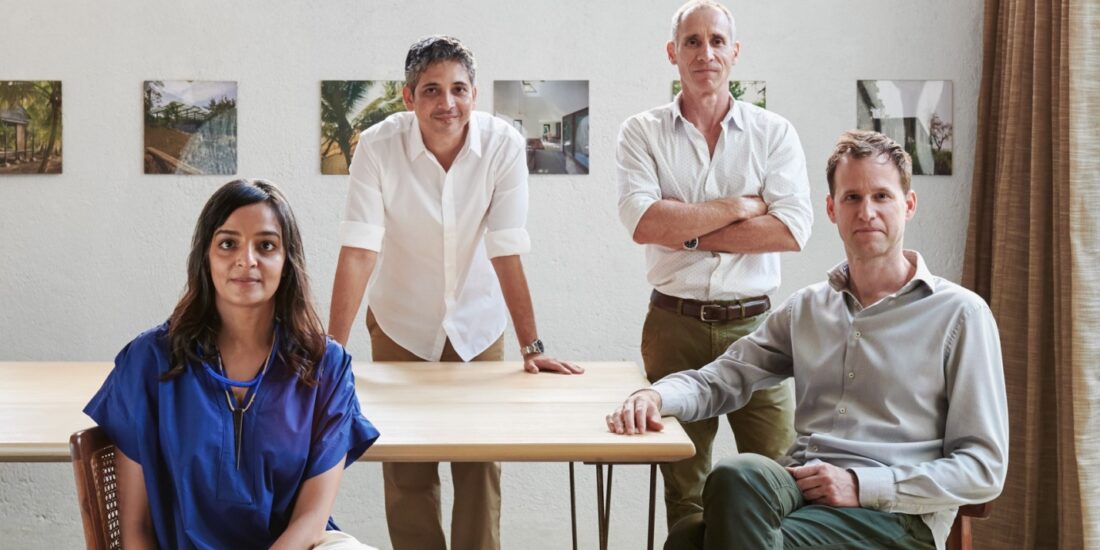Site-Specific Intervention at the Central Library in Utrecht
Utrecht Public Library commissioned internationally renowned Dutch artist Maarten Baas to create a large-scale installation piece to highlight the entrance of the Central Library at Neude Square, Utrecht, The Netherlands.
The former main Post Office on Neude square is one of Utrecht’s most iconic buildings, a nationally listed landmark housing the oldest public library in the Netherlands. Completed in 1924 and designed by architect Joseph Crouwel in the style of The Amsterdam School.
The installation, named Intellectual Heritage, stretches 9.5x 8 metres across the entrance and is installed directly above the main door, around a stained oval glass decoration.
It’s an unexpected and eccentric intersection of bold architectural 3D signage and LED text displays of different scales, mimicking advertising messages and illuminated 24/7 with different intensities throughout the day.
The installation displays words used in the language of literature, culture and philosophy establishing a shared frame of reference among the educated, but the visual language used to deliver the message is perceived as pop culture: a form of advertising.

Dutch artist and designer Maarten Baas (1978) is widely considered to be one of the most exciting and influential designers working today, embracing a practice that is unconventional, rebellious and playful.
Maarten Baas has a track record of surprising and intriguing the public.
“Is the installation pointing to the entrance of a casino in Las Vegas or to the portal of a cultural temple?” asks Baas. “All of my work is open to numerous interpretations, and the interpretations can be of contradictory nature.”
Making a library an inclusive space and an attractive resource for the younger generation, increasing their reach to attract the demographic, is one of the core messages of Intellectual Heritage.
The dilemma between choosing references of high vs pop culture is played cleverly by Baas with an intersection of the two.
The installation displays Latin words as slogans: Lectori Salutem (Greetings Reader), Scientia potentia est (Knowledge is power) mixed with names of famous authors, from Virginia Woolf to Kafka, one of Baas’ favourite writers. He couldn’t resist quoting him, considering the complicated bureaucratic process that made the work possible.
A few Dutch words take the spotlight: Literatuur (Literature) Poëzie (Poetry) but also Strip, a Dutch word for comic books with a very different meaning in English. (Las Vegas Strip or the neon lights of a strip bar?). Utrecht is a student city, so he advocates for words such as Study Study Study or Silence, two main activities for students. Yet, the expressive lettering promotes energy and noise, rather than concentration and silence.
The three programmable LED displays, text will periodically change, showcase the same twist between high vs low culture. One is a very well-known poem of Utrecht, the second is a digital list of important authors and Nobel Prize in Literature, while in the third is popular songs and slogans from the city of Utrecht.
Baas’ practice often contains elements of disruption and unpredictability and his work can be provocative and controversial; but the provocation comes with a message, with a twist or an unexpected joke.
Public libraries are valued as trusted spaces, open to all, but they also face many challenges to their resilience and sustainability, including the advances in technology which affect the way people want to connect to information and culture. Digital technology will continue to have a major impact on how we obtain and consume information, and people will expect even more interactive experiences, stretching outside of the building itself.
Designed to be accessible and inclusive, the piece has something for everyone – including children, who are sure to recognize the familiar animated illustrations of the beloved character Nijntje (Miffy), the iconic rabbit created by Utrecht artist Dick Bruna.
From Sartre to Miffy, Intellectual Heritage explores new models of communication, inviting a joyful and inclusive form of interaction and leading people to culture.
All Images Courtesy Maarten Baas.







